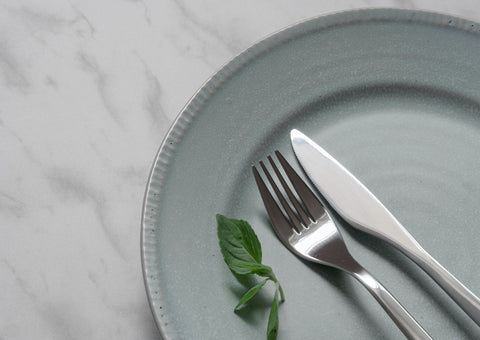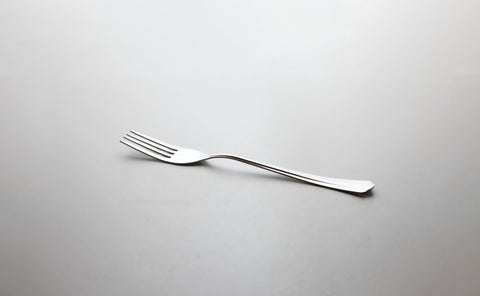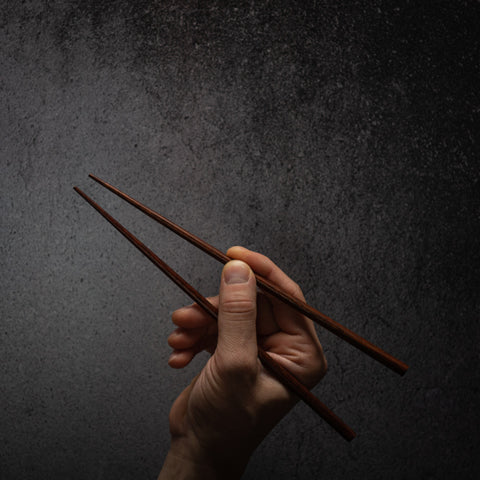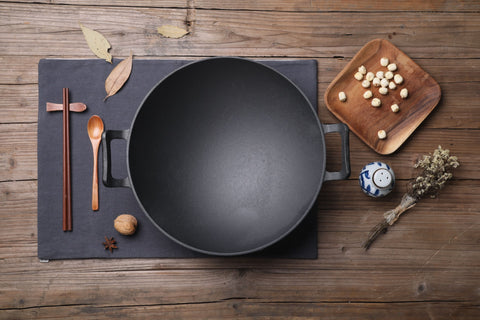3 Solid Reasons Why Chinese and Japanese Don’t Eat With a Knife And Fork
Have you ever wondered why chopsticks are the traditional eating utensils in Chinese and Japanese cultures? There is a long history behind this cultural choice, which has more to do with practicality than anything else.

Photo by Ellie Eshaghi on Unsplash
3 Solid Reasons Why Chinese and Japanese Don’t Eat With a Knife And Fork Are:
This blog post will explore why the Chinese and Japanese don’t eat with a knife and fork. From religious customs to environmental concerns, many factors have led to the widespread use of chopsticks in these countries over hundreds of years. However, a combination of cultural traditions and practicality makes the Chinese and Japanese rarely use a knife and fork when consuming their regional fares.
So let’s dive into it and explore some interesting facts about why Chinese and Japanese don’t eat with a knife and fork!
1. Is it rude to eat with a fork in Japan?
Traveling to foreign countries is always full of exciting new experiences. But one that could catch you off guard is table etiquette.

Photo by Anna Kumpan on Unsplash
In Japan, utensils are a tricky puzzle that must be solved to avoid embarrassing faux pas. Forks actually appear at the dining table infrequently, and if you want to avoid striking out in front of your hosts, it would be wise to familiarize yourself with the accepted norm.
Interestingly, chopsticks are the eating centerpiece when enjoying a meal in Japan. They can be utilized for almost all types of dishes – rice, noodles, and even thick soups (you can slurp or use a soup spoon for the liquid) – so unless specifically requested, there’s no need to label oneself as impolite by bringing out the fork.
2. Why Do Westerners Eat Rice With A Fork?
If you’ve ever wondered why Westerners eat rice with a fork rather than the more common Asian method of chopsticks, it all comes down to their prowess in fork usage.
Piling up the rice on the fork and efficiently maneuvering the food toward the mouth is a breeze.
Modern-day etiquette shows that utensils are still preferred in most restaurants and dinner tables across Europe and North America. Although some may use an ˙exotic ˙approach by going ˙al-desco ˙and picking at their plate with chopsticks, it’s much easier (and more socially acceptable) to pick up your fork from the dinner table before tucking into your tasty bowl of rice.
3. How Did Chopsticks Become the Traditional Eating Utensils of Asian Cuisine?
The invention of chopsticks has created an incredible piece of culinary history that still lingers to this day – using chopsticks as the traditional Asian eating utensil.
It is thought that chopsticks began as early as 1200 B.C. in ancient China and were used as a tool for cooking food over open flames. The very first chopsticks were probably a pair of twigs that were found to be easy to handle food in a pot of hot water or oil.

Photo by Max Griss on Unsplash
Over time, chopsticks have evolved and become part of many different Asian cultures, such as Korea, Japan, Vietnam, and more. As some places adapted their own version of chopsticks due to various materials available, others adopted the concept, and it became a signifying trait amongst these regions – representing respect towards elders, special occasions, and hospitality.
What an exciting origin story – though they may seem like tiny sticks simply aimed to put food in your mouth, they show so much history!
4. What is the Environmental Impact of Using Chopsticks vs. Knives and Forks?
Chopsticks or knives and forks? It’s a question many of us have pondered over before. But when it comes to environmental impact, there is an obvious winner: chopsticks!
Using reusable chopsticks saves tons of plastic waste that would have been created from the frequent use of single-use plastic cutlery like knives and forks.
Additionally, with reusable chopsticks, you can reduce your dependence on resources since they require no electricity or water to clean them up – just a quick rinse with soapy water will do the trick! So when it comes down to it, forgoing the knives and forks for chopsticks isn’t just more mindful – it’s better for the environment too.
5. What Are Some of the Dos and Donts of Chopsticks in China and Japan?
Chopsticks are crucial in Chinese and Japanese culture, so mastering the dos and don’ts of their use is essential. It’s important to keep in mind that different regions have their own variations in etiquette.

Photo by Cooker King on Unsplash
In both East Asian nations, it is customary to use chopsticks cleanly and elegantly without pointing or waving them around. In addition to its custom, it is considered polite to put your chopsticks on top of the plate or bowl with tips pointing towards the left and parallel to the table after you have finished eating in both China and Japan.
It’s interesting to note that it may be taboo or an omen of bad luck to stick your chopsticks upright in the food or pass food from chopstick to chopstick, as these resemble funerary traditions. However, learning these politeness customs will make you look like a pro when dining out!
For many centuries, cooking and cutlery customs around the world have been established based on regional culinary preferences and ingredient availability. For example, both Chinese and Japanese cuisine uses chopsticks to manipulate and prepare food as opposed to knives and forks, which are popular in the West. This tradition is also prevalent in other parts of South East Asia, such as Vietnam, where high-end restaurants provide customers with wooden soup spoons instead of conventional western cutlery. All these factors contribute to why Asian dining culture values utilizing chopsticks instead of knives or forks for everyday meals.

